
Ann Arbor Charter Township is a charter township of Washtenaw County in the U.S. state of Michigan. The population was 4,673 at the 2020 census. The township borders the city of Ann Arbor and contains numerous exclaves, but the two are administered autonomously.

Barton Hills is a village in Washtenaw County in the U.S. state of Michigan. The population was 316 at the 2020 census. The village is located within Ann Arbor Charter Township just northwest of the city of Ann Arbor.

The Huron River is a 130-mile-long (210 km) river in southeastern Michigan, rising out of the Huron Swamp in Springfield Township in northern Oakland County and flowing into Lake Erie, as it forms the boundary between present-day Wayne and Monroe counties. Thirteen parks, game areas, and recreation areas are associated with the river, which passes through the cities of Dexter, Ann Arbor, Ypsilanti, Belleville, Flat Rock and Rockwood that were developed along its banks.
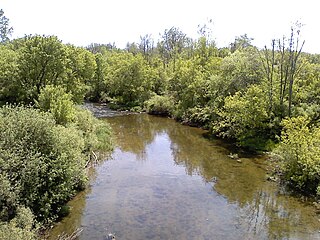
The Clinton River is a river in southeastern Michigan in the United States. It is named in honor of DeWitt Clinton, who was governor of New York from 1817 to 1823.

The Huron–Clinton Metroparks system is a regional park system in Metro Detroit in the U.S. state of Michigan. The park system includes 13 parks totaling more than 24,000 acres (97 km2) arranged along the Huron River and Clinton River forming a partial ring around the metro area. Plans are in development to finish the ring by building hike/bike trails to connect all the parks as a green belt. The parks draw about 7.5 million visitors a year, down from a peak of 10 million in 2009. The park system is primarily tax-funded with a $50 million annual budget. The system provides employment for 200 full-time and part-time employees year-round and 1,000 additional summer workers. The rivers are prime fishing and canoeing streams with Delhi Metropark including a short rapids, which while runnable, is the only point other than dams on either stream normally portaged.
Stony Creek Metropark is a Huron-Clinton Metropark located in southeast Michigan in the outskirts of metro Detroit. The park is predominantly in Washington Township and Oakland Township, with a small portion in Shelby Township. The park covers 4,461 acres (18.05 km2) with Stony Creek Lake at its center.
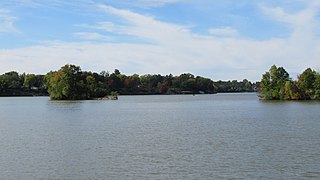
Belleville Lake is a fresh water artificial reservoir located mostly within Wayne County in the U.S. state of Michigan. A very small portion extends west into Washtenaw County. The lake was created from the construction of the French Landing Dam and Powerhouse along the Huron River in 1925.
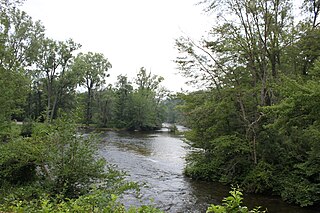
Hudson Mills Metropark is a park in the Huron-Clinton system of metro parks in Michigan, USA. It is located on North Territorial Road at the crossing of the Huron River, twelve miles (19 km) northwest of Ann Arbor. The park covers 1,549 acres and has an 18-hole golf course, disc golf courses, picnic areas, swings and slides, softball diamonds, a hike-bike trail, nature trails, river fishing, a canoe camp and a group camp. The park is a popular destination for canoeing and kayaking; parking areas near the Huron River provide access for canoe launching. The park will eventually be linked to Dexter-Huron Metropark and Delhi Metropark via the Border-to-Border Trail. Canoe rentals are available at Delhi Metropark.

Oakwoods Metropark is a park in the Huron-Clinton Metroparks system, located along the Huron River near Flat Rock, Michigan. The park consists several miles of bike trails, numerous nature trails, horse trails, a canoe and kayak launch, and a Nature Center. It is directly connected to Willow and Lower Huron Metroparks, as well as Huroc Park through a branch of the Downriver Linked Greenways.
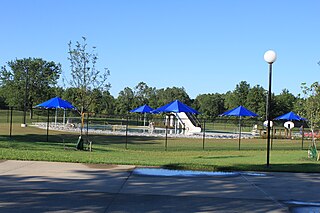
Willow Metropark is a park in the Huron-Clinton Metroparks system, located on the banks of the Huron River between Lower Huron Metropark to the northwest and Oakwoods Metropark to the southeast. The park consists of a wide variety of trails and recreational areas, including an 18-hole golf course, the 17-acre (69,000 m2) Washago Pond, hike/bike trails, a disc golf course,a children's play area, a pool, and a kayak/canoe launch, in addition to groomed cross country ski trails in the winter months.

Dexter–Huron Metropark is a 122-acre (0.49 km2) park on the Huron River in the Huron-Clinton system of metro parks. The park has three picnic areas, a children's play area, a softball diamond, fishing, and canoe launching. A Metropark daily or annual vehicle permit is required for entry. The park will eventually be linked to Hudson Mills Metropark and Delhi Metropark via the Border-to-Border Trail.
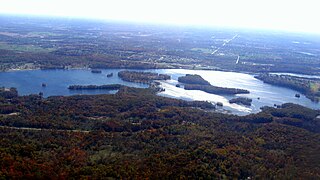
Kent Lake is a 1,200-acre (490 ha) reservoir lake formed by damming the Huron River near its headwaters. Kent Lake is mostly located in Oakland County, Michigan in Milford and Lyon Townships, with a small portion including its dam located in Green Oak Township, Livingston County, Michigan.

The Peninsular Paper Dam is a decommissioned hydroelectric concrete gravity dam and former paper mill and power station crossing the Huron River. It is located in the city of Ypsilanti in Washtenaw County in the U.S. state of Michigan. The dam was constructed in 1914, and the resulting reservoir is an unnamed 177-acre pond along the river.

Ford Lake is a fresh water artificial reservoir located in Washtenaw County in the U.S. state of Michigan. The lake was created from the construction of Ford Lake Dam along the Huron River in the early 1930s. The lake is named after business magnate Henry Ford.

The Ford Lake Dam is an earthen, multi-arch hydroelectric gravity dam and powerhouse crossing the Huron River in Ypsilanti Charter Township in Washtenaw County in the U.S. state of Michigan. The dam was constructed in 1931–1932 and created the Ford Lake reservoir at 975 acres (395 ha).

The Flat Rock Dam is a decommissioned hydroelectric gravity dam crossing the Huron River. It is located in the city of Flat Rock in Wayne County in the U.S. state of Michigan. The dam was built by the Ford Motor Company in 1924 for hydroelectricity for the nearby Ford Motor Company Lamp Factory, which remained in operation until 1950.

The Geddes Dam is a decommissioned hydroelectric barrage dam crossing the Huron River. It is located in Ann Arbor Township in Washtenaw County in the U.S. state of Michigan. It was built by the Detroit Edison Company in 1919 for hydroelectricity before being decommissioned in 1959. The dam is currently owned by the nearby city of Ann Arbor. The surrounding area is used for recreational purposes, including Gallup Park, which is Ann Arbor's most popular recreational area.
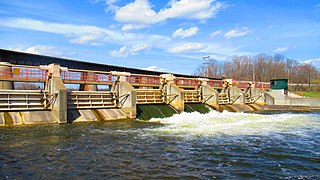
The Argo Dam is a decommissioned hydroelectric barrage dam crossing the Huron River. It is located in the city of Ann Arbor in Washtenaw County in the U.S. state of Michigan. It was built by the Detroit Edison Company in 1920 for hydroelectricity before being decommissioned in 1959 and sold to the city of Ann Arbor in 1963. The surrounding area is used for recreational purposes, including Argo Nature Area and Bandemer Park.

The Barton Dam is a hydroelectric barrage dam crossing the Huron River. It is located in the city of Ann Arbor in Washtenaw County in the U.S. state of Michigan. It began operating in 1912 and currently provides hydroelectricity to city of Ann Arbor, which owns and maintains the dam and power station.




















